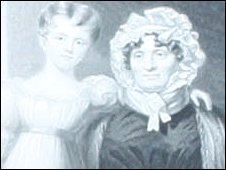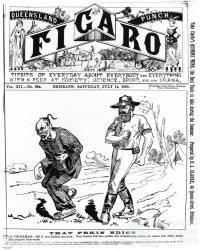 It was Grand Final Day and crowds were packing the MCG. This is the day everything seems to stop in Melbourne and the city takes on the feeling of being a ghost town as people gather in venues to watch the match. It is the day of bar-b-ques and general partying.
It was Grand Final Day and crowds were packing the MCG. This is the day everything seems to stop in Melbourne and the city takes on the feeling of being a ghost town as people gather in venues to watch the match. It is the day of bar-b-ques and general partying.
Not being vaguely interested in football, the big match or for that matter being in a crowd, I was feeling a little restless.
Sensing my need for broad open spaces on land where there is a whole lot of nothing, Akari (my beloved Mazda 3) rattled her wheels and said she was up for one of our mystery tours. So, without stopping to gather any supplies, the Lappies (my two Finnish Laphaunds) and I set off on one of our expeditions.
We headed west from Castlemaine, through Maldon, stopping briefly for a sniff run at Eddington and then on beyond Dunolly to Bealiba.
 The area around Bealiba was originally known as Cochrane’s, after John and James Cochrane, who took up a pastoral run in 1853. When gold was discovered in 1855-56 the area was known as Cochrane’s Diggings, but the surveyor who laid out the township in 1862 adopted the name of the pastoral run, ‘Bealaba’, later Bealiba. It is thought that the name is derived from Aboriginal words meaning red gum creek.
The area around Bealiba was originally known as Cochrane’s, after John and James Cochrane, who took up a pastoral run in 1853. When gold was discovered in 1855-56 the area was known as Cochrane’s Diggings, but the surveyor who laid out the township in 1862 adopted the name of the pastoral run, ‘Bealaba’, later Bealiba. It is thought that the name is derived from Aboriginal words meaning red gum creek.
 Once a hub for those seeking gold today Bealiba is a quiet little town. With nothing open to visit, I was content to go to the historic cemetery where one is inevitably confronted with the grief that people who lived in this harsh place endured. As the headstone I photographed testifies, the mortality rate amongst infants was very high. The loss endured by John and Mary Jones is hard to imagine.
Once a hub for those seeking gold today Bealiba is a quiet little town. With nothing open to visit, I was content to go to the historic cemetery where one is inevitably confronted with the grief that people who lived in this harsh place endured. As the headstone I photographed testifies, the mortality rate amongst infants was very high. The loss endured by John and Mary Jones is hard to imagine.
Glancing at the petrol gauge Akari and I agreed that it was best to head towards St Arnaud. The drive from Bealiba to this gracious old town seemed to take forever and Akari and I muttered to one another about the folly of deciding to wander about in a part of the world where there is hardly a car to be seen. But we pressed on, relieved to finally reach our destination and stop to refuel, for me to savour coffee and a packet of mixed sandwiches. As I looked at the beautifully manicured park across the road I did think that next time we spontaneously decided to head bush I might pack my picnic basket.
Logan, with its endless variety of absolutely nothing, represents outstanding paucity of value for the tourist dollar. Situated in an area that boasts some superb scenic, high speed, touring roads with extremely low traffic density this is a shabby scrap of dying history
So journey to Logan and relive the shocking hardship of those wretched souls who opened up this land for reasons that no historian has ever been able to fathom.
All roads lead to the Logan Pub.
Sourced from Logan Pub Website – a delightful must read.
As we left St Arnaud I contemplated how far it was to get back to Castlemaine. It was a pleasant surprise to stumble upon the Logan Pub in The Scrub a hotel which promotes itself as offering old fashioned hospitality. The hotel’s quirky website informs us that Logan, a rustic and historically significant hamlet in North Central Victoria, offers the genuine tourist a wealth of valuable experiences.
The perfect place to wait and meet Godot I wondered?
Over a lemon-lime and bitters and a bag of potato crisps, I stopped to chat with the bartender (look carefully you will find him in the photo I took) and took in my surroundings. I mentally noted the assorted items that were hanging from the roof and adorning the shelves. Nearby the huge screen revealed that the big match had started and an array of country folk began to materialize to watch it. I was happy to slip quietly away and head home via Tarnagulla.
A day spent in a land where there is supposedly nothing revealed that there is always something. There never was nothing in the beginning and it turns out that there is something very special in a part of the world that proclaims to be a place where there is a whole lot of nothing.
Footnote: This post is taken from a journal entry. I am offering an intensive journal writing course at the Castlemaine Community House beginning on October 16th. An online version is available at Trains of Thought but only subscribers can view this. Feel free to contact me for more details.













































 I am sure you remember the Choose Your Own Adventure books, where you’re chased by a tiger. You can escape it by leaping into the ocean 50 feet below (go to page 48) or face the tiger with your homemade slingshot (go to page 128).
I am sure you remember the Choose Your Own Adventure books, where you’re chased by a tiger. You can escape it by leaping into the ocean 50 feet below (go to page 48) or face the tiger with your homemade slingshot (go to page 128).













 This installation, at the Vaughan Cemetery, was gifted by the artist in memory of her pioneering ancestors who, like couple, sacrificed so much and contributed to shaping the township of Vaughan. She also pays respect to the Dja Daj Warring, the first people who lived here.
This installation, at the Vaughan Cemetery, was gifted by the artist in memory of her pioneering ancestors who, like couple, sacrificed so much and contributed to shaping the township of Vaughan. She also pays respect to the Dja Daj Warring, the first people who lived here.




























 An African proverb
An African proverb































































 The other stone, not far from the isolated Catholic Ground is inscribed with the words “A tribute to those who lay beneath may they have found peace”. After substantial rainfall this part of the world is truly beautiful. With only the sound of nearby grazing sheep I think it is a good place to lie and rest.
The other stone, not far from the isolated Catholic Ground is inscribed with the words “A tribute to those who lay beneath may they have found peace”. After substantial rainfall this part of the world is truly beautiful. With only the sound of nearby grazing sheep I think it is a good place to lie and rest.





 So you can imagine my delight when I finally found the Fryerstown cemetery. A Cemetery may not be on everyone’s list of top 10 places to visit but this one is particularly special. I thought that it would be a great place to take morning or afternoon tea in a picnic basket. It was there that
So you can imagine my delight when I finally found the Fryerstown cemetery. A Cemetery may not be on everyone’s list of top 10 places to visit but this one is particularly special. I thought that it would be a great place to take morning or afternoon tea in a picnic basket. It was there that
 In 1852, on a barren piece of land that was of no use to gold miners or fossickers, a cemetery for the deceased children of the Castlemaine goldfields was set aside. Located within the Castlemaine Diggings National Heritage Park is Pennyweight Flat Children’s Cemetery. A pennyweight is a very small measure of gold.
In 1852, on a barren piece of land that was of no use to gold miners or fossickers, a cemetery for the deceased children of the Castlemaine goldfields was set aside. Located within the Castlemaine Diggings National Heritage Park is Pennyweight Flat Children’s Cemetery. A pennyweight is a very small measure of gold.




















